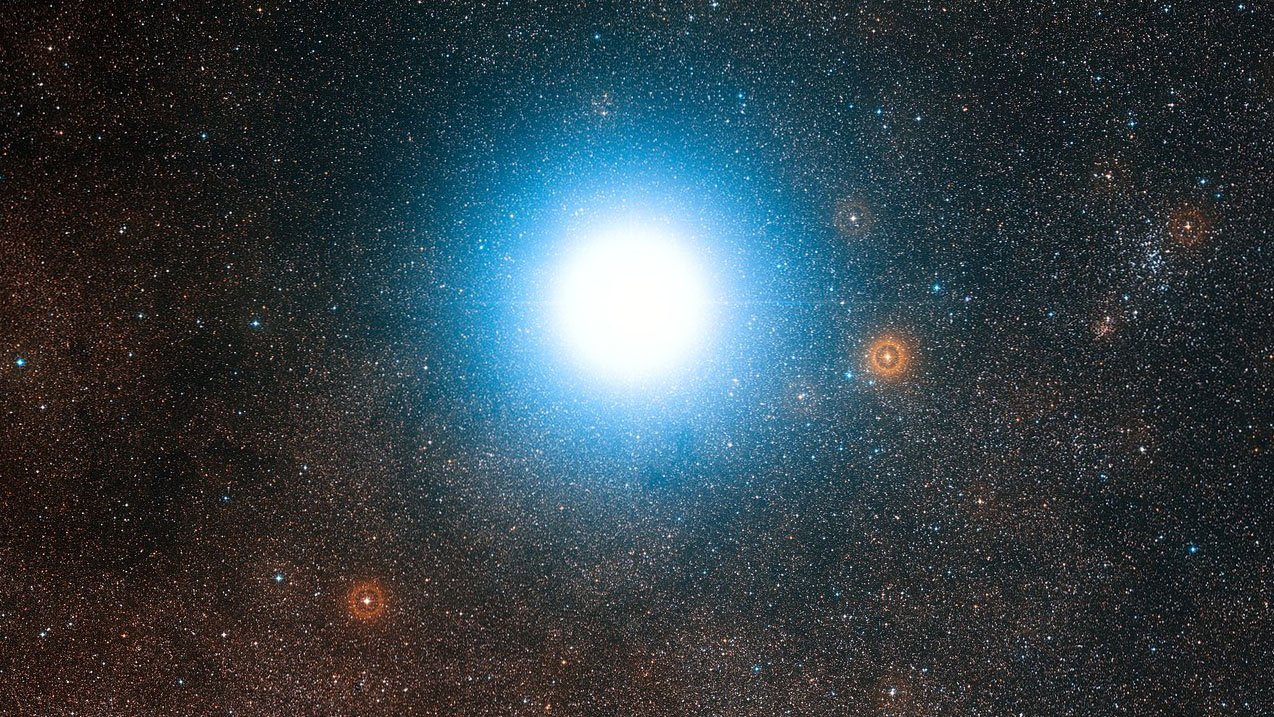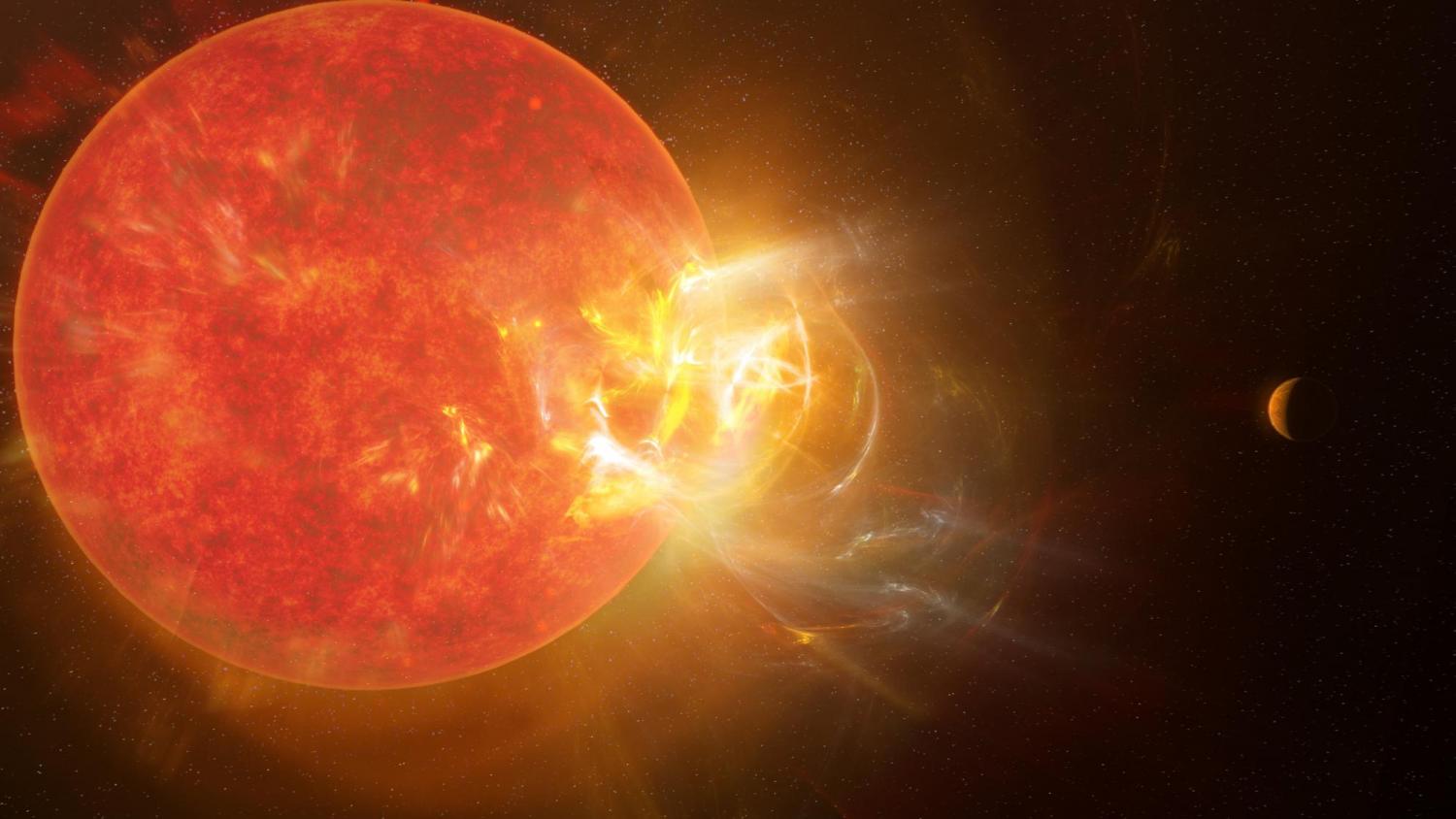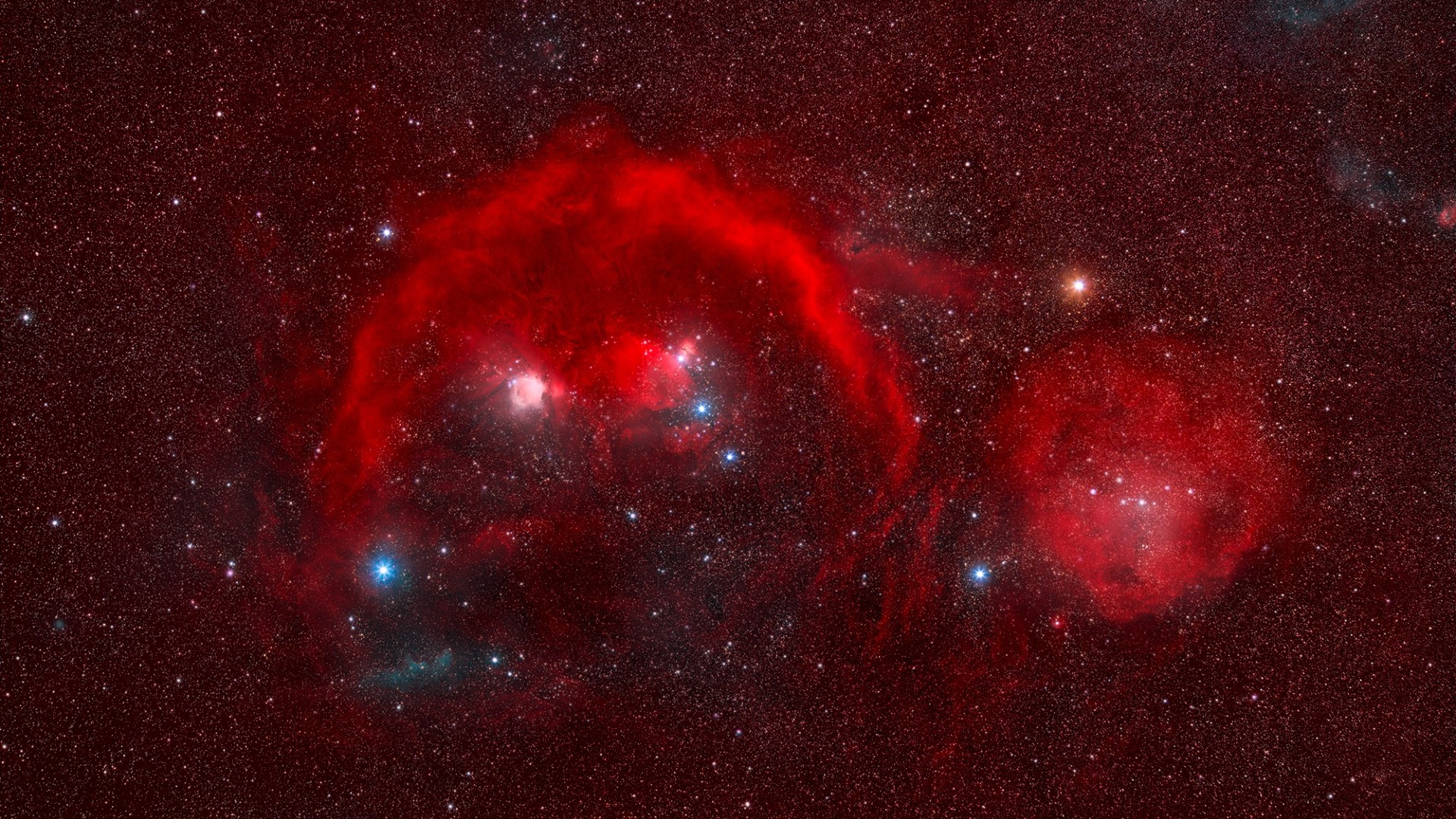Mysterious radio signal from Proxima Centauri was definitely not aliens
The signal appears to have an Earthly origin.

Potential evidence of extraterrestrial radio signals from Proxima Centauri, the closest star to Earth, were likely just interference from human technology, researchers say.
The mysterious signals were first detected in 2020 by the Breakthrough Listen project, which hunts for evidence of alien "technosignatures" — radio waves and other evidence of extraterrestrial technology. The initiative uses some of the largest radio telescopes in the world to capture data across broad swaths of the radio spectrum in the direction of a wide range of celestial targets.
One of Breakthrough Listen's targets is Proxima Centauri. The star, located slightly more than 4 light-years from Earth, is a red dwarf orbited by two known exoplanets.
Related: E.T. signal from Proxima Centauri? A conversation with Breakthrough Initiatives' Pete Worden
The researchers scanned Proxima Centauri across a frequency range of 700 megahertz to 4 gigahertz, with a resolution of 3.81 hertz. This is the equivalent of tuning to more than 800 million radio channels at a time, with exquisite sensitivity, the researchers noted.
Using the Parkes Telescope in Australia, one of the largest telescopes in the Southern Hemisphere, since 2016 the scientists have detected more than 4.1 million "hits," or frequency ranges that had signs of potentially significant radio signals. However, upon subsequent analysis, the vast majority of such hits usually turned out to be emissions from human technology here at Earth.
Specifically, the researchers looked for radio signals that may have come from Proxima Centauri based on two main criteria.
Breaking space news, the latest updates on rocket launches, skywatching events and more!
First, they looked at whether the signal was changing steadily in frequency over time. A transmitter on a distant planet is expected to move with respect to whatever telescope on Earth detects it, leading to a Doppler shift in frequency (akin to how ambulance sirens sound higher-pitched as the vehicle drives toward you and lower-pitched as it moves away). Rejecting hits with no such hints of motion reduced the number of hits from about 4.1 million to about 1 million.
Second, the researchers determined whether the remaining hits appeared to come from the direction of Proxima Centauri. To determine this, the telescope pointed in the direction of the star and then pointed away, repeating this "on-off" pattern several times. A candidate technosignature should appear only in the "on" observation, when the telescope was looking toward the star, whereas local sources are expected to have both "on" and "off" observations.
After scientists applied both these filters, they next visually inspected the remaining 5,160 candidates to weed out common mistakes. For example, sometimes a faint signal was actually visible in the "off" observations but was not quite strong enough for the automated data analysis software to detect.

"Searching for technosignatures is a rigorous and deliberative scientific endeavor that demands attention to detail and a high degree of skepticism," astrophysicist Andrew Siemion at the University of California, Berkeley, the principal investigator of Breakthrough Listen, told Space.com.
The remaining signal of interest, dubbed BLC1, persisted for more than two hours of observations and appeared to be present only in "on" observations from Proxima Centauri.
"BLC1 represents the best candidate signal we have had in the Listen program since beginning the program in 2015," Siemion said. The scientists detailed their findings in two studies online Oct. 25 in the journal Nature Astronomy.
However, when Sofia Sheikh, a radio astronomer at the University of California, Berkeley, and co-author on both new studies, dug into a larger dataset of observations taken at other times, she found about 60 signals that share many features of BLC1 but are also seen in their respective "off" observations. This suggests BLC1 is similarly not a genuine technosignature.
The scientists think BLC1 "is most likely an extreme example of local interference, in the sense that its properties are very different from other interference and it thus could mimic a bonafide technosignature," Siemion said. "The fact that it took us a number of months to conduct all the analysis necessary to allow us to draw a conclusion is evidence of the challenge this signal presented."
Specifically, when it comes to BLC1 and its roughly 60 brethren, the signals are spaced at regular frequency intervals in the data, and these intervals appear to correspond to multiples of frequencies used by oscillators that are commonly used in various electronic devices, Sheikh explained. This suggests these signals come from human technology, although the scientists were unable to identify their precise source.
"This signal, even though it was generated by human radio frequency interference, was uniquely similar to the kind of signal we would expect from space," Sheikh told Space.com. "It fooled our algorithms to screen out radio frequency interference, and it took months for us to perform the analysis and gather the data to understand that it was human-generated. A signal-of-interest has never been scrutinized this thoroughly in the history of SETI (search for extraterrestrial intelligence), so it's ground-breaking in that way."
Breakthrough Listen is making all of this data available to the public to examine for themselves. "We would like to conclusively identify the specific source of BLC1," Siemion said. "As we continue to dig into data from Parkes, I think we may have a good chance to do so in the future."
The project will continue monitoring Proxima Centauri and keep refining its algorithms to improve their ability to discriminate between real and false signals.
"The field of technosignature science has matured to the point where sufficient technical expertise exists to investigate putative signals in great detail, and the data are of a high enough quality to do so rigorously," Siemion said. "The successful detection and investigation of BLC1 is indicative of a dramatic expansion of observational capability in SETI searches."
In the future, upcoming radio telescopes such as MeerKAT in South Africa and the Very Large Array (VLA) in the southwest United States "will offer new and powerful ways to reject interference and improve our sensitivity," Siemion said. "We are already well along in deploying new SETI systems on MeerKAT and VLA, and when they are fully online, we will be observing millions of stars per year between them."
"While we were unable to conclude a genuine technosignature, we are increasingly confident that we have the necessary tools to detect and validate such signatures if they exist," Pete Worden, executive director of the Breakthrough Initiatives, said in a statement.
Follow us on Twitter @Spacedotcom and on Facebook.
Join our Space Forums to keep talking space on the latest missions, night sky and more! And if you have a news tip, correction or comment, let us know at: community@space.com.

Charles Q. Choi is a contributing writer for Space.com and Live Science. He covers all things human origins and astronomy as well as physics, animals and general science topics. Charles has a Master of Arts degree from the University of Missouri-Columbia, School of Journalism and a Bachelor of Arts degree from the University of South Florida. Charles has visited every continent on Earth, drinking rancid yak butter tea in Lhasa, snorkeling with sea lions in the Galapagos and even climbing an iceberg in Antarctica. Visit him at http://www.sciwriter.us
